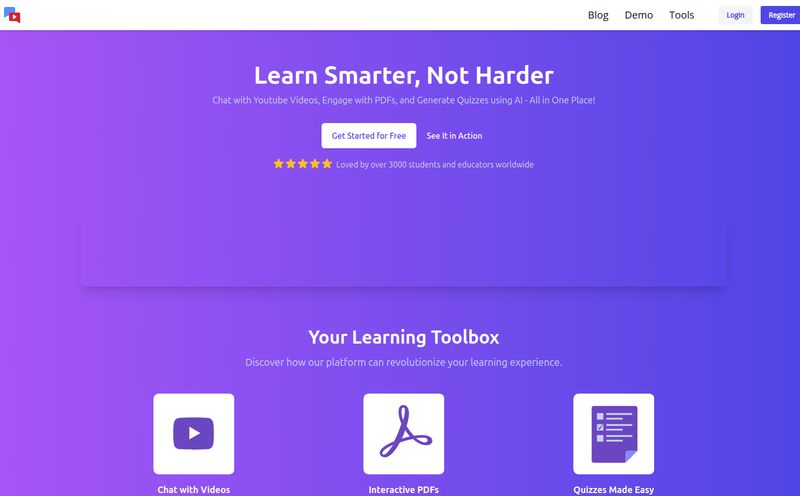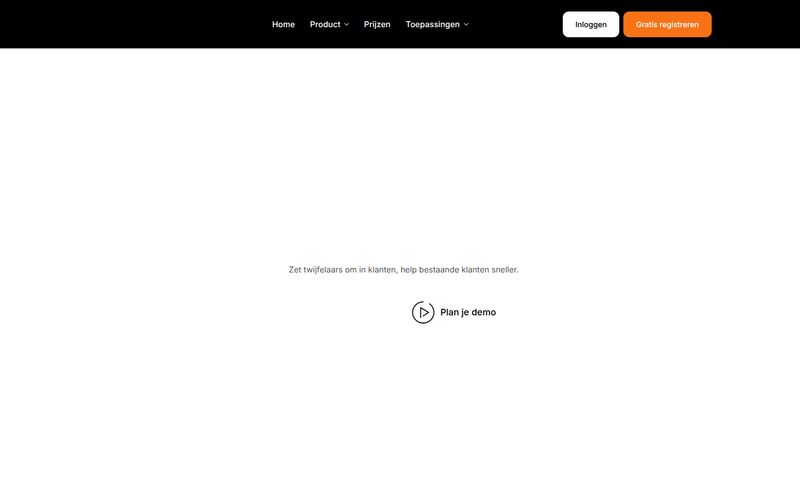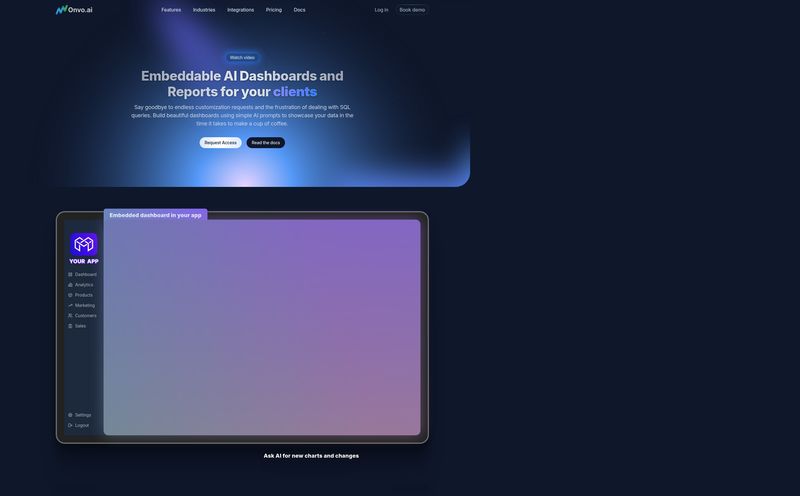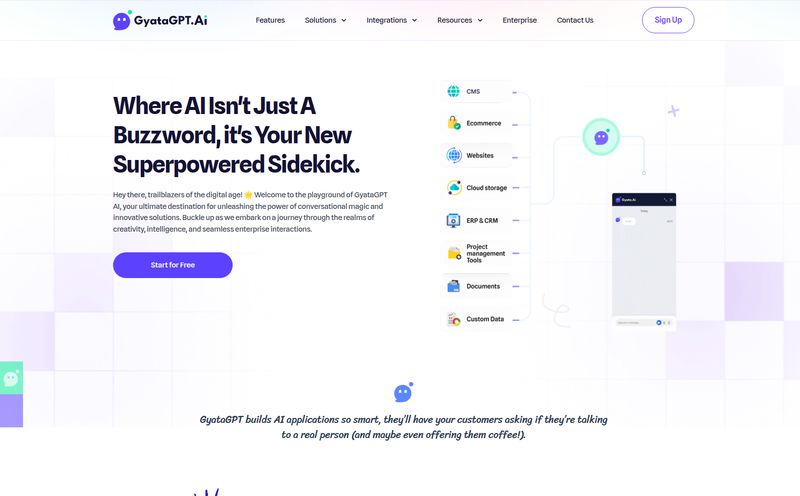If you've spent any time with a barbell in your hands, you know the cycle. You find a program online—maybe it’s a free PDF, maybe it’s one you paid 50 bucks for from some Instagram lifter. The first few weeks? Magic. You're hitting numbers, feeling strong, everything is coming up Milhouse.
And then… life happens. A terrible night's sleep. A stressful project at work. You walk up to a barbell that your spreadsheet swears you should be able to lift, and it feels like it's bolted to the floor. Your program doesn't care that you're running on fumes. It just says: "Lift the thing." So you either grind through a terrible session, or you skip it and feel guilty. Sound familiar?
I've been in that exact spot more times than I can count. For years, I’ve bounced between human coaches, my own cobbled-together programs and those rigid, unforgiving spreadsheets. So when I started hearing the buzz about Weightlifting.AI, my inner skeptic raised an eyebrow. An AI coach? Seriously? But my inner tech-nerd and frustrated lifter was intrigued. A program that adapts to you, in real-time. A weightlifting program built around... you? It sounded too good to be true. So I dug in.
So What Exactly is Weightlifting.AI?
Let's get this out of the way: this isn't just another fancy training log or a pre-written program delivered through an app. Weightlifting.AI is positioned as an actual AI-driven coach. Think of it less like a static road map and more like a smart GPS for your training. A traditional program is like printing out MapQuest directions (remember that?)—it doesn't know if there's a traffic jam or a closed road ahead. Weightlifting.AI is like Waze; it sees you're slowing down, asks what's up, and reroutes you to still get you to your destination (a new PR, hopefully) on time.
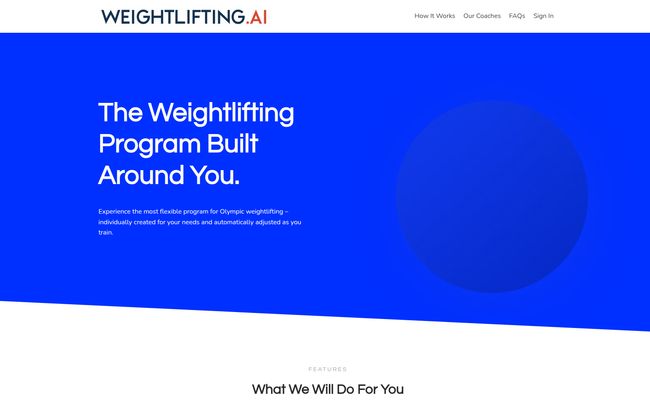
Visit Weightlifting.AI
The platform uses artificial intelligence to generate a completely personalized training plan based on your current strength levels, your goals, and how many days a week you can train. But the real secret sauce is its adaptability. After each main lift, you provide feedback. Based on how you performed and how it felt, the AI adjusts the rest of your session and even the plan for the upcoming weeks. It's designed to be a living, breathing program that evolves with you.
The Problem with Old-School Digital Programming
My biggest gripe with most online programs has always been their inflexibility. They're built on percentages and projections that assume a perfect, linear progression in a perfect world. But who lives in a perfect world? Nobody I know.
When "One Size Fits All" Fits No One
Those cookie-cutter programs can be a decent starting point, but they fail to account for individual differences in recovery, muscle fiber type, and daily stressors. They might work great for a 22-year-old athlete with nothing to do but train and eat, but what about the 40-year-old masters lifter with a job and kids? The testimonials on their site kinda hit this home for me. You see people from all walks of life, like Matthew, who added a mind-boggling 19kg to his snatch and 24kg to his clean & jerk in a single cycle. That doesn't happen on a generic plan.
How the AI Magic Actually Works
This is where it gets cool. The process isn't some black box you can't understand. It's actually pretty intuitive.
Your Personalized Starting Point
You start by telling the app your current maxes for the snatch, clean & jerk, squat, and so on. You also tell it your focus—are you trying to peak for a competition, build general strength, or maybe focus on technique? You pick your training days. From there, the AI builds out your initial training cycle. It's your personalized blueprint.
The Adaptive Engine Is The Real MVP
This is the core of the whole thing. Let's say you're programmed for a heavy single in the snatch. You hit it, but it was a real grinder. The app will likely ask for an RPE (Rate of Perceived Exertion). You tell it that was a 9.5/10 effort. The algorithm takes that data and might decide to dial back the intensity on your back-off sets. Had a great day and that heavy single flew up? It might push you a little more. This constant feedback loop is what prevents overtraining and burnout, while still ensuring you're making progress. It accounts for fatigue automatically, something that usually requires an experienced (and expensive) human coach to manage.
Peaking for Your Next Competition
For any competitive weightlifter, the taper and peak leading into a meet is a dark art. Go too heavy, and you're fried on meet day. Go too light, and you feel flat. Weightlifting.AI has a specific setting for competition prep, structuring your training to deload properly and have you primed to hit your biggest numbers on the platform. This is a massive feature that a lot of generic programs just can't offer.
Who Is This For, Anyway?
I've seen some debate about who benefits most from a tool like this. In my opinion, it casts a pretty wide net, but it's not for everyone.
- The Beginner-Ish Lifter: If you're brand new to the snatch and clean & jerk, you still need hands-on coaching to learn the basic movements. The app even says you need a basic understanding. But once you have the fundamentals down? This could be an incredible tool to guide your progression without the cost of a full-time coach.
- The Intermediate Who's Stuck: This is the sweet spot. You've been training for a few years, your newbie gains are a distant memory, and you keep hitting the same walls. An adaptive program that intelligently manages your fatigue and volume could be the very thing that breaks you through that plateau.
- The Masters Athlete: As we get older, recovery is everything. We can't just run the same high-volume programs the young guns do. A system that listens to your body's feedback daily is, frankly, a godsend for experienced lifters who need to train smarter, not just harder.
What I Love (And What to Keep in Mind)
No tool is perfect, right? After my analysis, I've got a pretty clear picture. The biggest pro is the intelligent personalization. It’s a level of customization that, until now, was reserved for high-level athletes with personal coaches. The flexibility to choose your training focus and schedule is also a huge plus.
Now, for the caveats. It's not a magic pill. You do need to have a basic technical proficiency in the main lifts. An AI can't fix glaring form issues (though they do offer access to form checks). You also need some equipment—a barbell, plates, and probably a squat rack are non-negotiable. And yes, it’s a subscription service. This isn't a one-time purchase.
The All-Important Question of Price
The website doesn't splash the price on the homepage, which is pretty standard for subscription software these days. It is a subscription-based model. Before you balk at another monthly fee, let's frame it. How much does a decent remote weightlifting coach cost? You're often looking at $150-$300+ per month. While Weightlifting.AI is almost certainly cheaper than that, it's best to think of it as an investment in a specialized tool. It's a fraction of the cost of a human coach but offers a similar level of daily adaptation. Is that trade-off worth it? For many, I suspect the answer is a resounding yes.
Frequently Asked Questions about Weightlifting.AI
Is this program suitable if I'm a total beginner?
It's best if you have some basic experience. The AI manages your loads and exercises, but it assumes you know how to perform a snatch and a clean & jerk with safe, foundational technique. You should seek some in-person coaching first to get the basics down.
How many days a week do I need to train?
The program is flexible! You can typically choose between 3 to 6 training days per week, depending on the cycle you select. The AI will then structure your program to fit that schedule.
What happens if I have a bad day and can't perform?
That's the beauty of the system. You provide feedback that you're having an off day (e.g., via RPE), and the AI will adjust the weights for your remaining exercises. It's designed to prevent you from digging yourself into a recovery hole.
Can I choose what I want to focus on?
Yes. The platform allows you to select different training focuses, such as peaking for a competition, building strength in your squats, or simply a general preparation phase to improve your overall technique and work capacity.
Do I need special gym equipment?
You'll need access to standard weightlifting equipment: a barbell, bumper plates, a squat rack, and a safe space to perform the Olympic lifts. Nothing too fancy, but more than a basic hotel gym would offer.
My Final Verdict: Is an AI Coach for You?
Look, I’ll always believe there's no perfect substitute for the watchful eye of a great in-person coach. There’s a human element that a machine can’t replicate. But let's be realistic—that's a luxury not everyone can afford or access.
Weightlifting.AI fills a fascinating and much-needed gap in the market. It brings intelligent, adaptive programming to the masses. It’s for the self-motivated lifter who knows their way around a barbell but needs the guidance and accountability of a structured, smart program. It takes the guesswork out of training, and for me, that's worth a hell of a lot.
Will I be using it? I'm genuinely considering it for my next strength block. The idea of outsourcing all the complex programming decisions and just focusing on lifting the weights... that sounds pretty great to me. It's not the future of coaching, perhaps, but it's a very, very cool part of its present.
Reference and Sources
Weightlifting.AI Official Website: https://www.weightlifting.ai/
The Concept of RPE in Training (A good overview from Juggernaut Training Systems): https://www.jtsstrength.com/autoregulation-in-powerlifting-rpe/
